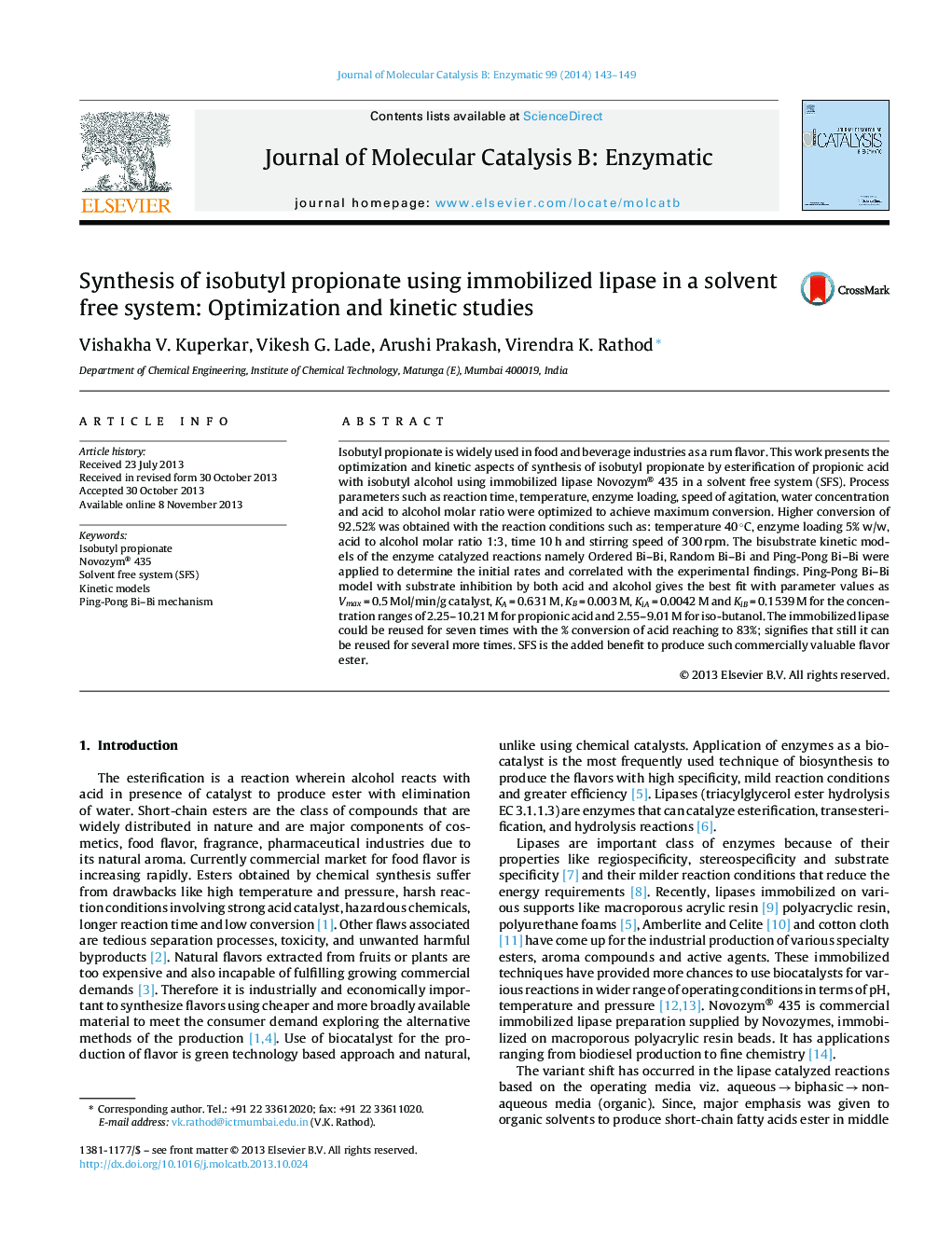| کد مقاله | کد نشریه | سال انتشار | مقاله انگلیسی | نسخه تمام متن |
|---|---|---|---|---|
| 69754 | 48790 | 2014 | 7 صفحه PDF | دانلود رایگان |
• Solvent free synthesis of isobutyl propionate by esterification using Novozym® 435.
• Higher conversions and initial rates were achieved in solvent free system.
• Optimization of process parameters was done.
• Three different bi–bi mechanisms (Ordered, Random and Ping-Pong Bi–Bi) are tested for esterification kinetics.
• Ping-Pong Bi–Bi model with substrate inhibition by both acid and alcohol was best suited.
Isobutyl propionate is widely used in food and beverage industries as a rum flavor. This work presents the optimization and kinetic aspects of synthesis of isobutyl propionate by esterification of propionic acid with isobutyl alcohol using immobilized lipase Novozym® 435 in a solvent free system (SFS). Process parameters such as reaction time, temperature, enzyme loading, speed of agitation, water concentration and acid to alcohol molar ratio were optimized to achieve maximum conversion. Higher conversion of 92.52% was obtained with the reaction conditions such as: temperature 40 °C, enzyme loading 5% w/w, acid to alcohol molar ratio 1:3, time 10 h and stirring speed of 300 rpm. The bisubstrate kinetic models of the enzyme catalyzed reactions namely Ordered Bi–Bi, Random Bi–Bi and Ping-Pong Bi–Bi were applied to determine the initial rates and correlated with the experimental findings. Ping-Pong Bi–Bi model with substrate inhibition by both acid and alcohol gives the best fit with parameter values as Vmax = 0.5 Mol/min/g catalyst, KA = 0.631 M, KB = 0.003 M, KiA = 0.0042 M and KiB = 0.1539 M for the concentration ranges of 2.25–10.21 M for propionic acid and 2.55–9.01 M for iso-butanol. The immobilized lipase could be reused for seven times with the % conversion of acid reaching to 83%; signifies that still it can be reused for several more times. SFS is the added benefit to produce such commercially valuable flavor ester.
Figure optionsDownload as PowerPoint slide
Journal: Journal of Molecular Catalysis B: Enzymatic - Volume 99, January 2014, Pages 143–149
